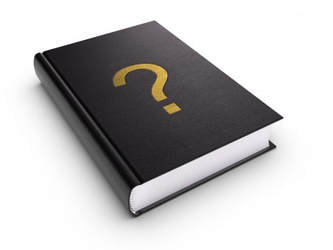
A number of books claiming to show discrepancies and contradictions in the New Testament mention that the accounts of Jesus’ temptation in the wilderness found in Matthew 4 and Luke 4 give the temptations in a different order. This is said to show disagreement among the New Testament writers as to what happened and that they were not sure themselves.
The temptations of Christ are identical in the two accounts, but Matthew records them as:
1. Turn stones into bread to satisfy his physical hunger.
2. Leap from the temple pinnacle to show his divine nature.
3. Worship Satan to receive great power.
Luke changes the order of the temptations slightly to:
1. Turn stones into bread.
2. Worship Satan.
3. Leap from the temple pinnacle.
However, there is a very likely reason for the different order in Matthew’s Gospel and that of Luke. Matthew’s Gospel was written to a Jewish audience. Luke’s Gospel, on the other hand, seems to have been written to a primarily Greek-speaking audience. Many of the differences between the two Gospels – for example, the genealogies of Jesus – are clearly as a result of the audiences addressed. The stories of the temptation of Jesus are no exception.
In Matthew, from a Jewish perspective, the temptations are arranged in an increasing order from appropriating God’s power for personal needs, to taking an easier path to fulfilling God’s will, to finally placing another god before God himself. For a Jewish audience, all these temptations would seem serious, but there is no question that they would be seen as being in an increasing order.
In Luke, the order of the temptations is subtly but importantly changed. For a gentile Greek audience, the temptation to perform the miracle of changing stones to bread would not be as great as a temptation to great power and rulership in the world, but that would itself not seem as great a temptation as to become like a god oneself. Luke’s order of the temptations perfectly fits this gentile Greek perspective, as do so many of the details in his Gospel.
There is another detail we should consider in looking at these accounts. Matthew’s order of the temptations not only fits the Jewish perspective best, it also seems to be an actual chronological order. We see this in the fact that Matthew uses chronological markers in his account – he writes “then…” or some similar term before each of the temptations to show that one followed the other (Matthew 4:1, 5, 8, 11).
Luke, however, uses no chronological markers and simply tells us what the temptations were – in an order that would make the most sense to his own primarily non-Jewish audience.
Ultimately, the fact that the temptations are listed in a different order in Matthew and Luke shows that the order itself does not matter. But the cultural perspectives of the audiences addressed by the two Gospels may show why the order changes in each of the accounts.
 RSS Feed
RSS Feed
